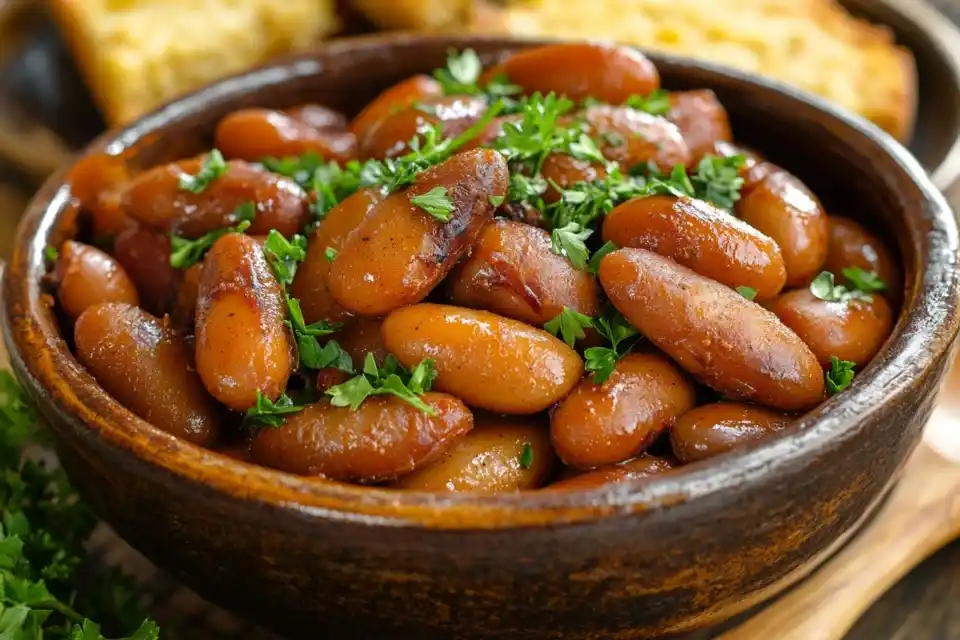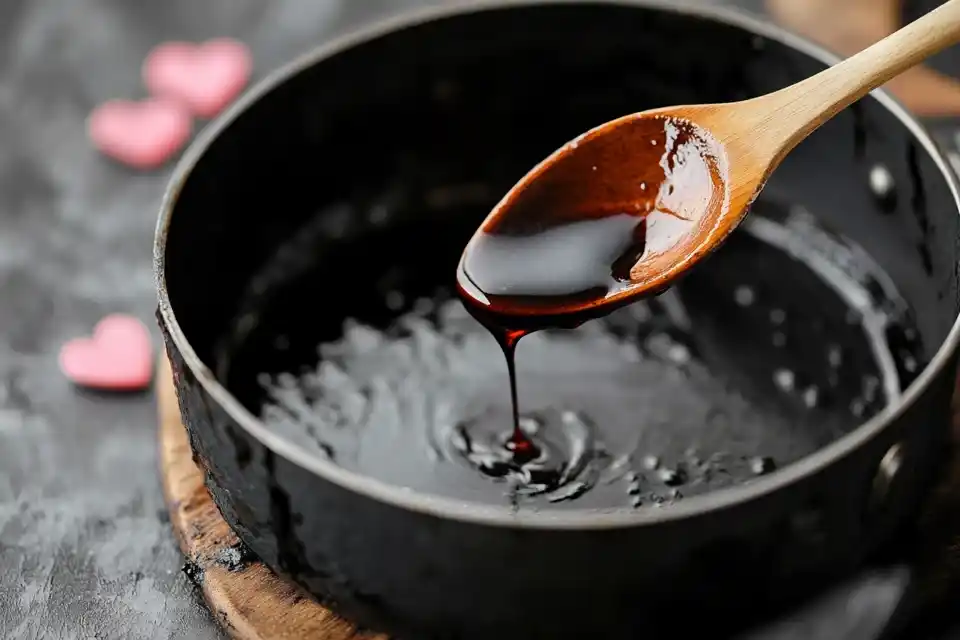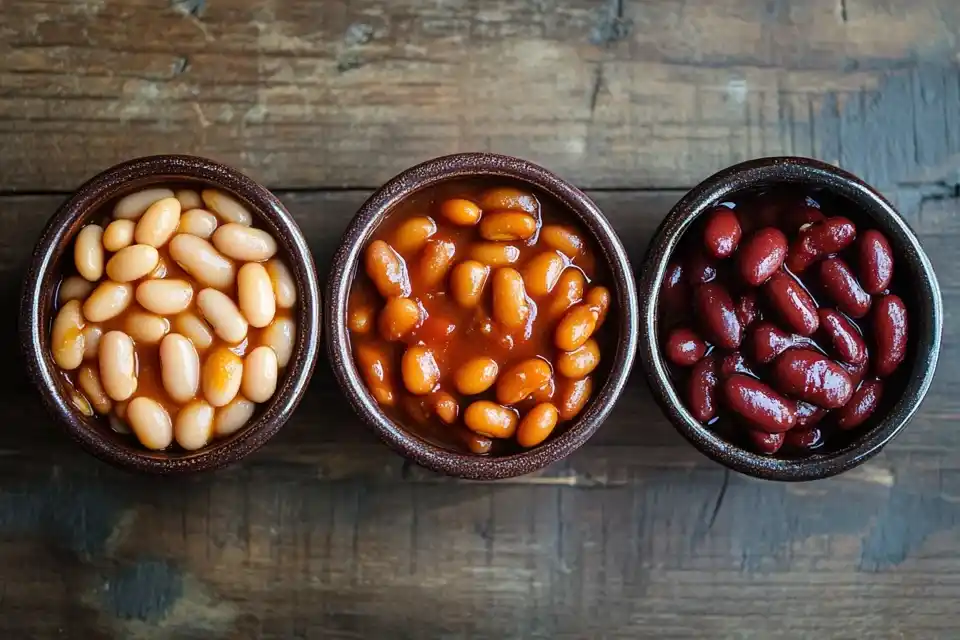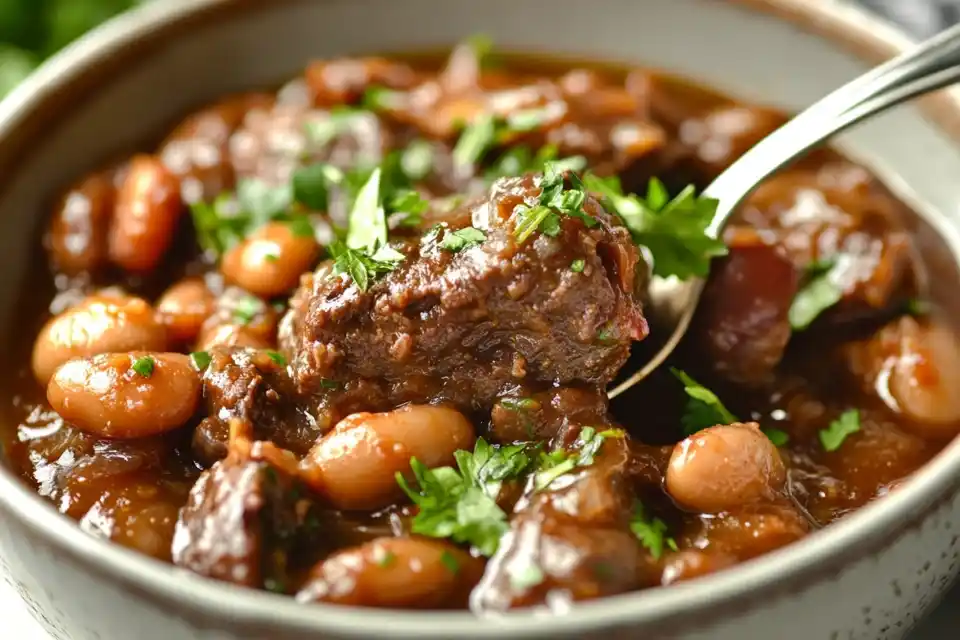Baked beans are the ultimate comfort food. They’re rich, hearty, slightly sweet, and smoky, making them a perfect side dish for barbecues, potlucks, or cozy homemade dinners. But let’s be real—homemade baked beans taste a thousand times better than anything from a can! If you’ve never made them from scratch, you’re in for a treat.

In this guide, we’ll dive deep into the history, nutrition, essential ingredients, and step-by-step methods to make the best baked beans ever. Plus, we’ll troubleshoot common mistakes so your beans come out perfectly every time.
Table of Contents
Why Are Baked Beans a Comfort Food Staple?
Ever wondered why baked beans are so popular? They’re more than just a delicious dish; they have history, tradition, and a place in almost every cuisine worldwide. Whether served as a Southern barbecue classic or a British breakfast essential, baked beans bring warmth to the table.
Fun Fact: In the UK, baked beans are often eaten on toast for breakfast, while in the US, they’re a must-have at backyard cookouts.
The History of Baked Beans: A Delicious Journey
The Origins: From Native American Cooking to British Influence
Baked beans have been around for centuries! Native Americans were the first to slow-cook beans with maple syrup and bear fat. When the Pilgrims arrived, they adapted the recipe using molasses and pork, a practice brought over from British cuisine.
By the 19th century, Boston became famous for its baked beans, earning the nickname “Beantown.” Boston Baked Beans were traditionally cooked in ceramic pots for hours, developing a rich, deep flavor.
How Baked Beans Became a Global Favorite
From the UK to the US, baked beans evolved into an international dish. The British version, typically made with a tomato-based sauce, became a breakfast staple. Meanwhile, American-style baked beans often include brown sugar, mustard, and smoky bacon.
Did You Know? In some parts of the US, baked beans are called “cowboy beans” because they were a campfire favorite in the Old West.
Health Benefits of Baked Beans: Are They Good for You?
Let’s talk nutrition! While store-bought baked beans can be loaded with sugar and preservatives, homemade versions can be much healthier.
Nutritional Breakdown: Protein, Fiber, and More
Baked beans are packed with protein, fiber, and essential nutrients. They’re great for digestion and help keep you full for longer.
| Nutrition Facts (per 1 cup serving) | Amount |
|---|---|
| Calories | 240 |
| Protein | 12g |
| Fiber | 9g |
| Sugar | 12g |
| Iron | 15% of daily value |
Are Baked Beans Good for Weight Loss?
Absolutely! Since beans are high in fiber, they help with digestion and keep you feeling full. But if you’re watching your sugar intake, be mindful of how much molasses or brown sugar you add.
The Role of Beans in Heart Health and Digestion
Beans are a heart-healthy food. They help lower cholesterol, regulate blood sugar levels, and improve gut health. The fiber in baked beans also promotes healthy digestion, reducing bloating and constipation.
Types of Baked Beans: Choosing the Right One for Your Recipe
Canned vs. Homemade: Pros and Cons
Can you make baked beans from a can? Sure. Will they taste as good as homemade? Not even close.
| Type | Pros | Cons |
|---|---|---|
| Canned Baked Beans | Convenient, fast, pre-seasoned | High in sugar, preservatives, lacks fresh flavor |
| Homemade Baked Beans | Customizable, richer flavor, healthier | Takes longer to cook |
Classic vs. Barbecue vs. Boston Baked Beans
There are multiple ways to prepare baked beans. Here’s how they differ:
- Classic Baked Beans: A traditional mix of beans, molasses, brown sugar, and bacon.
- Barbecue Baked Beans: A smoky, tangy version made with BBQ sauce.
- Boston Baked Beans: Slow-cooked with molasses, mustard, and salt pork.
Essential Ingredients for the Best Baked Beans Recipe
Choosing the Best Beans: Navy Beans, Pinto, or Great Northern Beans?
The type of bean you use makes a difference! Navy beans are the most common choice, but pinto or Great Northern beans work well too.
Pro Tip: If you want softer, creamier beans, soak them overnight before cooking.
Key Flavor Enhancers: Molasses, Brown Sugar, Mustard, and Bacon
What makes baked beans taste so good? It’s all about the ingredients:
- Molasses: Adds a deep, slightly bitter sweetness.
- Brown Sugar: Provides a caramel-like richness.
- Mustard: Gives a slight tangy contrast.
- Bacon: Infuses a smoky, savory depth.
Can You Make Baked Beans Without Sugar?
Yes! If you prefer a sugar-free version, swap out the brown sugar for honey, maple syrup, or skip the sweeteners altogether for a more savory dish.
Step-by-Step Guide: How to Make Homemade Baked Beans
Alright, it’s time to roll up your sleeves and make some delicious, homemade baked beans! Whether you want them smoky, sweet, or tangy, this guide will walk you through every step so you get perfect beans every time.
Ingredients You’ll Need
Here’s everything you need to make the best baked beans from scratch.
| Ingredient | Quantity |
|---|---|
| Dried navy beans (or Great Northern beans) | 2 cups |
| Water (for soaking and cooking) | Enough to cover beans |
| Bacon, chopped | 6 slices |
| Onion, finely chopped | 1 medium |
| Molasses | ¼ cup |
| Brown sugar | ¼ cup |
| Ketchup | ½ cup |
| Dijon mustard | 2 tbsp |
| Apple cider vinegar | 1 tbsp |
| Worcestershire sauce | 1 tbsp |
| Garlic, minced | 2 cloves |
| Salt and black pepper | To taste |
Pro Tip: Want extra smoky flavor? Add 1 teaspoon of smoked paprika or swap regular bacon for thick-cut smoked bacon.
Step 1: Soaking the Beans (Optional but Recommended)
Soaking beans overnight helps them cook faster and makes them easier to digest. To soak your beans:
- Place dried beans in a large bowl and cover them with plenty of water.
- Let them soak for 8-12 hours or overnight.
- Drain and rinse them before cooking.
Shortcut: If you’re short on time, do a quick soak! Bring beans to a boil, turn off the heat, cover, and let them sit for an hour. Drain and proceed with the recipe.
Step 2: Cooking the Beans
After soaking, you need to cook the beans until they’re tender but not mushy.
- Place the soaked beans in a large pot.
- Cover with fresh water and bring to a gentle boil.
- Reduce heat and simmer for 45-60 minutes, or until the beans are tender.
- Drain and set aside.
Step 3: Preparing the Sauce
The sauce is what gives baked beans their iconic flavor! Here’s how to make it:
- Cook the chopped bacon in a skillet over medium heat until crispy.
- Add chopped onion and garlic, sautéing until softened.
- Stir in molasses, brown sugar, ketchup, mustard, vinegar, Worcestershire sauce, salt, and pepper.
- Simmer for 5 minutes until everything is well combined.

Step 4: Baking the Beans
Now it’s time for the magic! Baking the beans slow and low helps them absorb all the flavors.
- Preheat your oven to 325°F (163°C).
- In a large ovenproof dish, mix the cooked beans with the sauce.
- Add a little water if needed to keep the beans moist.
- Cover with foil and bake for 2-3 hours, stirring occasionally.
- For a thicker consistency, uncover for the last 30 minutes of baking.
Pro Tip: If your beans start to dry out, add a splash of water or broth while baking.
Common Problems When Making Baked Beans & How to Fix Them
Why Are My Baked Beans Too Runny?
If your baked beans are too watery, here’s how to fix them:
- Uncover the dish and bake for another 30 minutes to allow excess liquid to evaporate.
- Mix in a cornstarch slurry (1 tbsp cornstarch + 2 tbsp water) to thicken.
- Simmer on the stovetop for a few minutes to reduce liquid.
How to Prevent Baked Beans from Being Too Sweet
Too much sugar? Balance it out:
- Add more Dijon mustard or apple cider vinegar for tanginess.
- Increase the salt slightly to neutralize sweetness.
- Use less molasses and brown sugar next time.
Fixing Overly Salty Baked Beans
Went overboard with the salt? Try these fixes:
- Add a splash of water or unsalted broth to dilute the saltiness.
- Mix in a mashed potato or a few spoonfuls of cooked rice to absorb excess salt.
- Balance flavors with a bit of brown sugar or honey.
Pro Tip: Always taste your sauce before mixing it with the beans to adjust seasoning.
Alternative Cooking Methods: Slow Cooker vs. Stovetop
Don’t have time to bake your beans? Here are two alternative methods:
Slow Cooker Method
- Place soaked, cooked beans and sauce ingredients in a slow cooker.
- Cook on LOW for 6-8 hours or HIGH for 3-4 hours.
Stovetop Method
- Combine beans and sauce in a large pot.
- Simmer on low heat for 1-2 hours, stirring occasionally.
Pro Tip: For the best flavor, let your baked beans sit for a few hours before serving. They taste even better the next day!
Creative Variations: Unique Baked Beans Recipes to Try
Now that you’ve mastered classic baked beans, why not put a twist on them? Here are some delicious variations that take baked beans to the next level.

Vegetarian Baked Beans Recipe
Skip the bacon but keep all the flavor with this meat-free version!
- Use olive oil instead of bacon grease.
- Add a splash of liquid smoke for that smoky taste.
- Boost umami with mushrooms or smoked paprika.
Spicy Barbecue Baked Beans
If you love a little heat, this variation is for you.
- Replace ketchup with BBQ sauce for a deep, smoky taste.
- Stir in chopped jalapeños or red pepper flakes.
- Finish with a dash of hot sauce before serving.
Maple and Apple Baked Beans
Want a hint of sweetness? This variation is perfect for fall!
- Use maple syrup instead of molasses.
- Add diced apples for a subtle fruity flavor.
- Sprinkle cinnamon for a warm, cozy taste.
Pro Tip: For an even richer flavor, cook your baked beans with smoked sausage or pulled pork.
Best Side Dishes to Serve with Baked Beans
Baked beans are incredibly versatile! Here are the best pairings for a well-rounded meal.
Classic Pairings
- Cornbread: Sweet, buttery, and perfect for soaking up the sauce.
- Grilled Meats: Pairs beautifully with ribs, burgers, or pulled pork.
- Coleslaw: Adds a fresh, crunchy contrast.
Unexpected Pairings for a Gourmet Twist
- Avocado Toast: A surprising but delicious combo.
- Roasted Vegetables: The smoky flavors go great together.
- Baked Sweet Potatoes: The sweetness complements the tangy beans.
Can You Freeze Baked Beans? Storage and Reheating Tips
If you made a big batch of baked beans, don’t worry—they store beautifully! Here’s how to keep them fresh.
How to Properly Store Leftovers
- Let baked beans cool completely before storing.
- Store in an airtight container in the fridge for up to 5 days.
How to Freeze Baked Beans
- Place cooled beans in freezer-safe bags or containers.
- Leave a little space for expansion.
- Freeze for up to 3 months.
Best Methods for Reheating Without Losing Flavor
- Stovetop: Heat over low heat, adding a splash of water if needed.
- Oven: Bake at 325°F (163°C) for 20-30 minutes.
- Microwave: Heat in 30-second intervals, stirring in between.
Pro Tip: If your reheated beans taste bland, add a little extra mustard, Worcestershire sauce, or a pinch of salt.

Frequently Asked Questions About Baked Beans
Can I Make Baked Beans Without Bacon?
Absolutely! Try using olive oil, butter, or smoked paprika to replace the depth of flavor bacon provides.
How Long Do Baked Beans Last in the Fridge?
Homemade baked beans last about 5 days when stored in an airtight container in the fridge.
What’s the Best Way to Make Baked Beans from Scratch?
Follow these three golden rules:
- Soak your beans: This makes them cook faster and digest easier.
- Slow cook them: The longer they simmer, the richer the flavor.
- Balance the flavors: Adjust sweetness, tang, and salt to your preference.
Conclusion: Enjoy the Best Homemade Baked Beans
And there you have it—the ultimate guide to making baked beans from scratch! Whether you go classic, smoky, spicy, or sweet, these beans are guaranteed to be a hit at any meal.
Now it’s your turn! Try this recipe, mix it up with your own twist, and let us know how it turned out!
